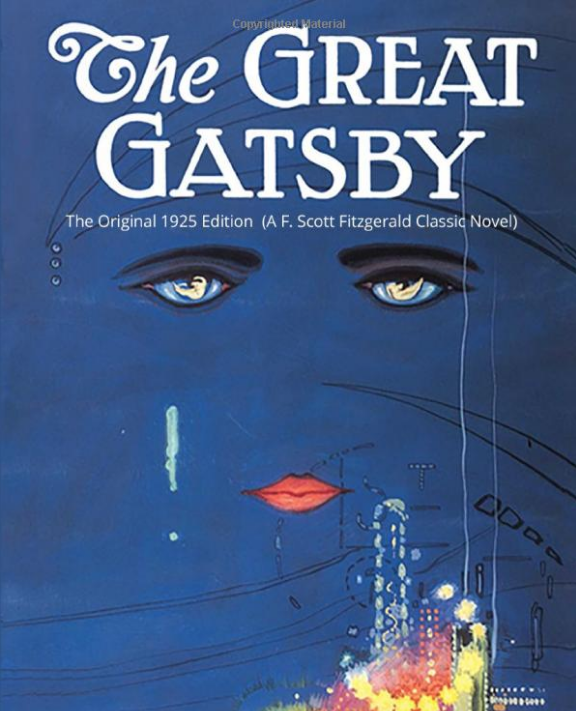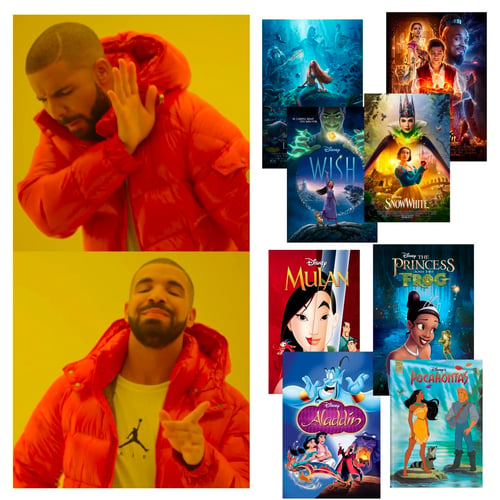The Great Gatsby (Taylor's Version)

Unravelling the meaning of a Taylor Swift song is no small feat, but is especially difficult when that song comes from her ninth studio album ‘evermore.’ Once referred to as the ”middle child” of Taylor Swift albums and released during the 2020 pandemic, there is very little information released about this album.
As the sister album of ‘folklore,’ there is little doubt ‘evermore’ is a storybook album, telling stories with every song, though those stories are not necessarily about Taylor herself. Here’s why ”happiness” is told from the point of view of Daisy from The Great Gatsby reminiscing about the events of the novel years after they take place.
Theme
In addition to the themes of materialism, the American dream, and commentary on society and class as a whole, The Great Gatsby also contains themes of letting go and moving on in love. Gatsby holds onto the idea of him and Daisy for years, unable to move on even though Daisy herself has been married to Tom Buchanan for years. Towards the end of the novel, as Gatsby and Daisy reunite and their love rekindles, Daisy is forced to choose between her husband and her former lover- and she picks Tom.
With the upcoming release of The Tortured Poet's Department, Taylor has taken it upon herself to create five playlists on Apple Music, each correlating to one of the five stages. Interestingly, "happiness" is in the playlist of acceptance: "I Can Do It With A Broken Heart." ‘Evermore’ is full of themes of letting go and attempting to move on, successfully or not, from ”it’s time to go” to ”closure” to ”right where you left me” to “champagne problems," and "happiness" is no exception.
(Notably, the term ’champagne problems’ refers to ”a ’problem’ of wealthy people […] having to decide between two wonderful things” or “a problem or dilemma that, when compared to issues of poverty, national disasters and war, are not all that big of a deal” or even literal ‘champagne problems’ in regards to drinking problems. It’s fair to say that the characters in The Great Gatsby, who for the most part are ridiculously wealthy, all suffer from some form of ’champagne problems.’ But that’s besides the point.)
The opening lines of ”happiness” set the stage:
Honey when I’m above the trees
I see this for what it is
There's evidence to suggest Daisy is the narrator in the song. Now that she is "Out of The Woods" of the relationship, perhaps this is her way of looking back on that past relationship and the bigger picture years later.
There’ll be happiness after you
But there was happiness because of you
Both of these things can be true
There is happiness
Gatsby and Daisy were happy both times they were together, in the distant past and at the time the main events of the book take place.
However, when reminiscing on the very difficult decision to choose Tom over Gatsby, she knows she made the right choice. She acknowledges Gatsby’s role in her life, but ultimately, knows she can be happy without him.
’happiness’ is told in the first person, like most of Taylor’s songs. That alone is not enough proof to sat Taylor IS Daisy. But what if I told you Taylor herself said so back in 2017?

It’s a neat little coincidence, isn’t it? And any Swiftie knows Taylor LOVES coincidences. She admits herself that nothing is accidental- she's a Mastermind. Not only this, but the themes in ‘evermore’ line up perfectly with the themes in ”happiness,” leading us to the conclusion that to some degree or another, Taylor can sympathize with Daisy’s point of view.
In The Great Gatsby, the green light at the end of Daisy’s dock becomes a symbol of hope for Gatsby, a hope that one day he and Daisy will be together again. Perhaps one of the most iconic and memorable examples of symbolism in literature, a green light at the end of the dock has become synonymous with The Great Gatsby.
Which is why this line is one of the biggest clues:
All you want from me now is the green light of forgiveness.

It's no secret Taylor has a penchant for clever wordplay. In this case the green light has a double meaning- Gatsby hoping for forgiveness from Daisy, and seeking the ”go ahead” that they can be together.
I hope she’ll be a beautiful fool
who takes my spot next to you

“Beautiful fool” is not a phrase you hear every day. So this lyrical reference is no coincidence.
The Great Gatsby takes place in New York, and Taylor and Daisy's love for the city is just one more thing they have in common. Along with Nashville and London, it’s safe to say New York is the third part in the trinity of ”cities Taylor Swift constantly references and has lived in.” Taylor has referenced or mentioned New York by name in eight out of her fourteen albums released so far (Speak Now (Taylor's Version), Red, Red (Taylor's Version), 1989, 1989 (Taylor's Version), Lover, folklore, Midnights) and I'll GUARANTEE you she'll reference it in her new album on Friday. So saying "happiness," like The Great Gatsby, takes place in New York is not a stretch.
There is happiness in our history
across our great divide

Tell me when did your winning smile
Begin to look like a smirk?
Perhaps one of the most memorable shots in The Great Gatsby (2013) movie is this shot of Gatsby's "winning smile." The book highlights the charisma of Gatsby, describing his smile as reassuring and confident.

Dappled with the flickers of light
From the dress I wore at midnight


This is not the first time nor will it be the last Taylor references dresses in her songs. It may be a bit of a stretch, but there’s no denying Taylor’s outfit from her 1989 world tour resembles Daisy’s party dress in the 2013 movie. Both of them are certainly ”dappled with flickers of light” and both have been worn at midnight (or near to it).
So now, the million dollar question: who is Taylor's Gatsby? Is he a fictional character, created for the purpose of the song? Is he Joe Alwyn, Taylor's boyfriend at the time of the song's release? Could it be someone else? Let's review the evidence:
- Gatsby must be someone she's moved on from
- Gatsby is asking her for forgiveness
- Gatsby is very charismatic but will eventually get over her and fill her place with someone else
- New York and 1989 are referenced or hinted at
So who is the culprit? Who was Taylor dating in the 1989 era? Who needed step-by-step instructions on How To Get The Girl back after you've screwed up? Who is her most charismatic and popular ex, known for being a "ladies man," especially back then? Now that she is "Out of The Woods" of the relationship, who is she looking back and thinking about? HARRY STYLES. It all makes sense.
Other more recent songs I suspect may be about or reference Harry Styles include "the 1" (folklore), This Is "Why We Can't Have Nice Things" (reputation), pretty much all the songs from 1989 but especially the vault tracks, and "right where you left me" (evermore). And as much as I'd like to expand upon all these ideas, I believe this post is long enough.
Here's some more articles that support my theory and bring up a few points I didn't catch:
- Did Taylor Swift Reference 11th Grade English When Writing “happiness”?
- Taylor Swift's Great Gatsby fixation
- Is Taylor Swift Incorporating A 10th Grade American Literature Classic into her Music?
Running to bed before mother catches me,
Julia



